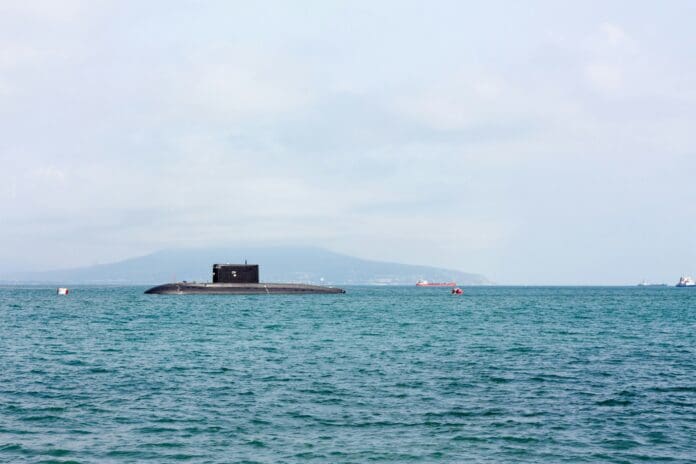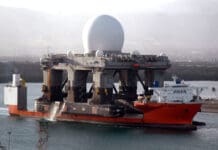This post is also available in:
 עברית (Hebrew)
עברית (Hebrew)
Indonesia has demonstrated a step forward in its naval capabilities with a successful torpedo firing from an autonomous submarine. The vessel, known as KSOT (Kapal Selam Otomatis Tanpa Awak), fired a 324 mm lightweight ‘Piranha’ torpedo in a recent test, confirming its operational potential for underwater warfare.
The test took place near the Fleet Command II Headquarters in Surabaya, East Java. Using a mobile crane from the Indonesian Navy’s 2nd Fleet Command pier, the torpedo was loaded into the submarine’s starboard-side launch tube. Once at sea, the KSOT maneuvered into position and launched the torpedo with precision, marking a milestone for the country’s autonomous naval technology.
The KSOT is a 15-meter-long, 2.2-meter-wide prototype capable of diving up to 350 meters and reaching speeds of 20 knots. During the test, it remained partially submerged for most operations, but also performed a diving demonstration to highlight its low-stealth capabilities. The vessel is equipped with modern sonar systems, torpedo launch mechanisms, and systems intended to enhance underwater maneuverability.
Developed by state-owned PT PAL Indonesia, the KSOT is designed to complement the nation’s existing conventional submarine fleet. The Indonesian Navy plans to induct 30 autonomous submarines by 2026, aiming to strengthen maritime defense and expand operational flexibility in territorial waters.
According to Interesting Engineering, the test was overseen by Indonesia’s Minister of Defense, with the President monitoring remotely. According to PT PAL, the exercise reflects the ongoing development of domestic naval technology and demonstrates the industry’s ability to deliver practical innovations for maritime security.
First publicly displayed during the Indonesian National Armed Forces’ 80th anniversary parade in October, the KSOT represents a step toward modernizing underwater combat capabilities. Its combination of speed, stealth, and autonomous operation offers the Navy new options for maritime missions, from patrol to precision strike operations.
PT PAL continues to conduct evaluations and refinements of the KSOT, focusing on performance optimization and integration with existing naval assets. With these developments, Indonesia aims to enhance its self-reliance in naval defense while expanding its capacity for autonomous underwater operations.


























